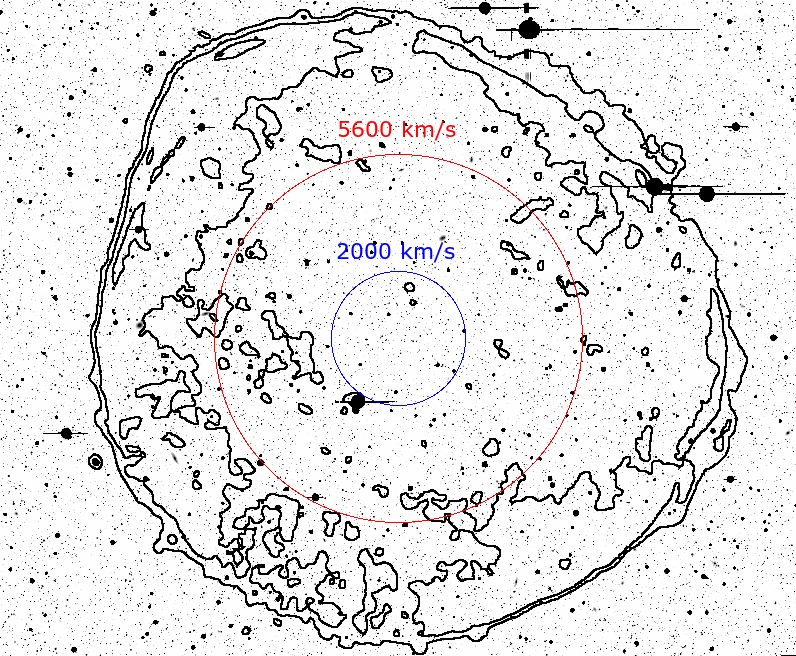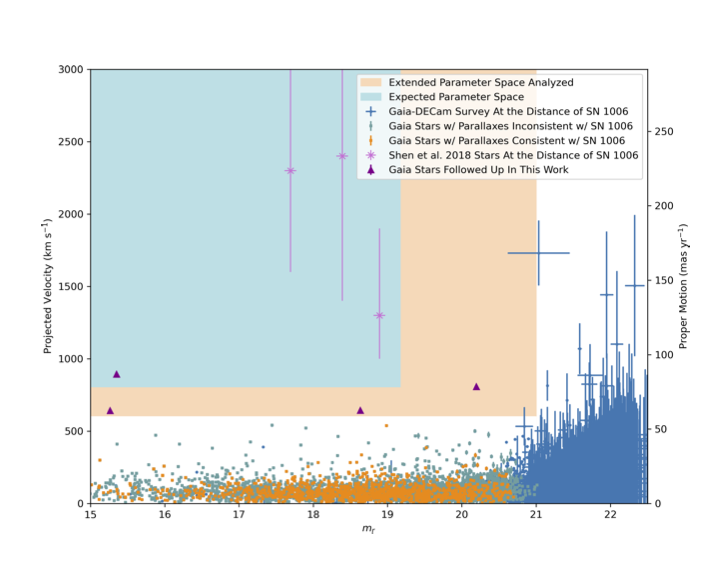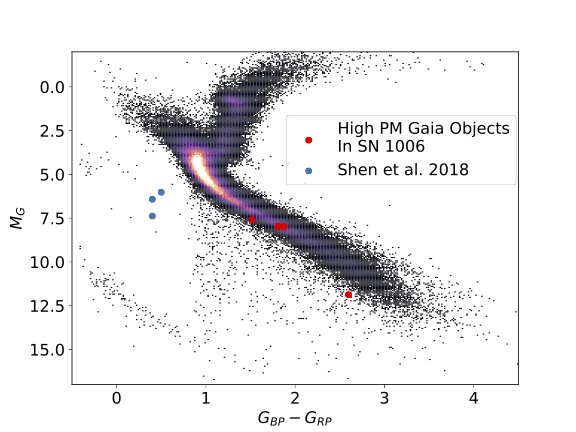Searching for a Hypervelocity White Dwarf SN Ia Companion: A Proper-motion Survey of SN 1006

2017 DECam imagery of the SN 1006 remnant. The contours are CHANDRA X-ray data (0.5-0.9 keV) showing the position of the remnant. The circles indicate the search region (red) and the the likely maximum displacement of a D6 star (blue), as well as the physical transverse velocity of a star corresponding to the angular distance assuming a distance of the remnant. The larger search region allows for ambiguity on the center of the remnant.

Results of proper motion survey showing apparent r-band magnitude against proper motion measurement and calculated transverse velocities assuming a distance of 2.17 kpc for DECam sources. The three Shen et al. 2018 stars have corrected apparent magnitudes as they would appear at the same distance with uncertainties and including foreground extinction. A surviving white dwarf companion in accordance with the predictions of the D6 scenario was expected to lie in the shaded region with the previously discovered D6 stars. The four Gaia stars in the analyzed region are shown in Table 1 and Figure 6, and are discussed in Section 4 along with the high proper motion objects fainter than 21

Color-Magnitude Diagram of 150 000 secure parallax (parallax over error > 30), Gaia stars around SN 1006. The blue dots show the three D6 candidates discovered in the field by (Shen et al. 2018) far off the main sequence. The red dots show the high proper motion (> 500 km s−1) Gaia objects inside SN 1006 in our search. They lie on or close to the main sequence with ordinary colors

